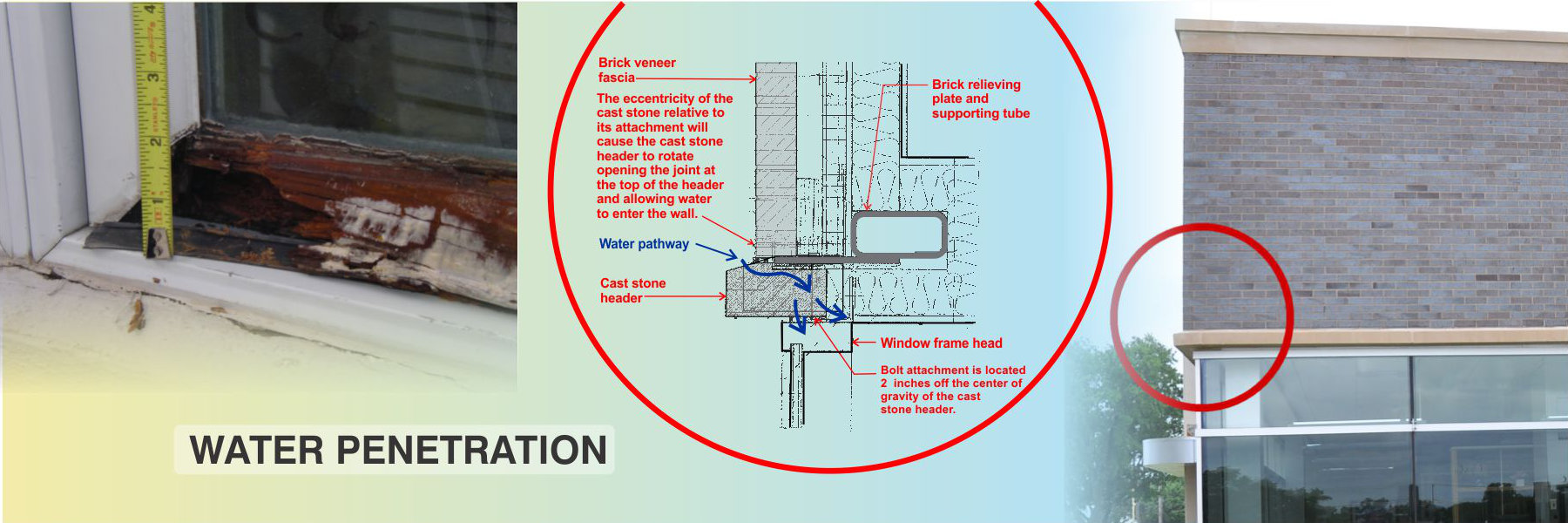
WATER AND MOISTURE INTRUSION
One of the most pervasive problems of the built environment is the management of water: moving it to where you want it and keeping it out of where you don’t want it. Water is a problem for several reasons:
- Water is the basis for life and this includes microbes that attack building materials.
- Many construction materials absorb water and change in size relative to their moisture contents.
- Some microbes produce toxins that make us ill or just discolor materials.
Fundamentally, it is best to keep water out of buildings, but this is easier said than done. If unwanted water enters a building it can be challenging to determine how and why. To correct the condition the entry mechanism must be identified, defined and traced. This challenge is complicated by the fact that water enters buildings in a variety of forms (solid, liquid and gas) in a variety of ways and its presence is not known until secondary effects such as mold, deterioration and corrosion occur. Proper building practices help to prevent moisture intrusion, but the complexity of today’s buildings and the introduction of new building products further complicate the challenge. Proper investigation of moisture intrusion addresses the following issues:
Key issues:
- Where is the water accumulating?
- What is the pattern of elevated moisture?
- Does elevated moisture follow a cyclical pattern, that is, does it coincide with specific weather events?
- What possible entry points into the building does water have?
- How is the building constructed?
- What are the secondary effects of elevated moisture?
- How can the problem be controlled or corrected?
Watch our Video: Commercial Roof Defects and Water Intrusion
